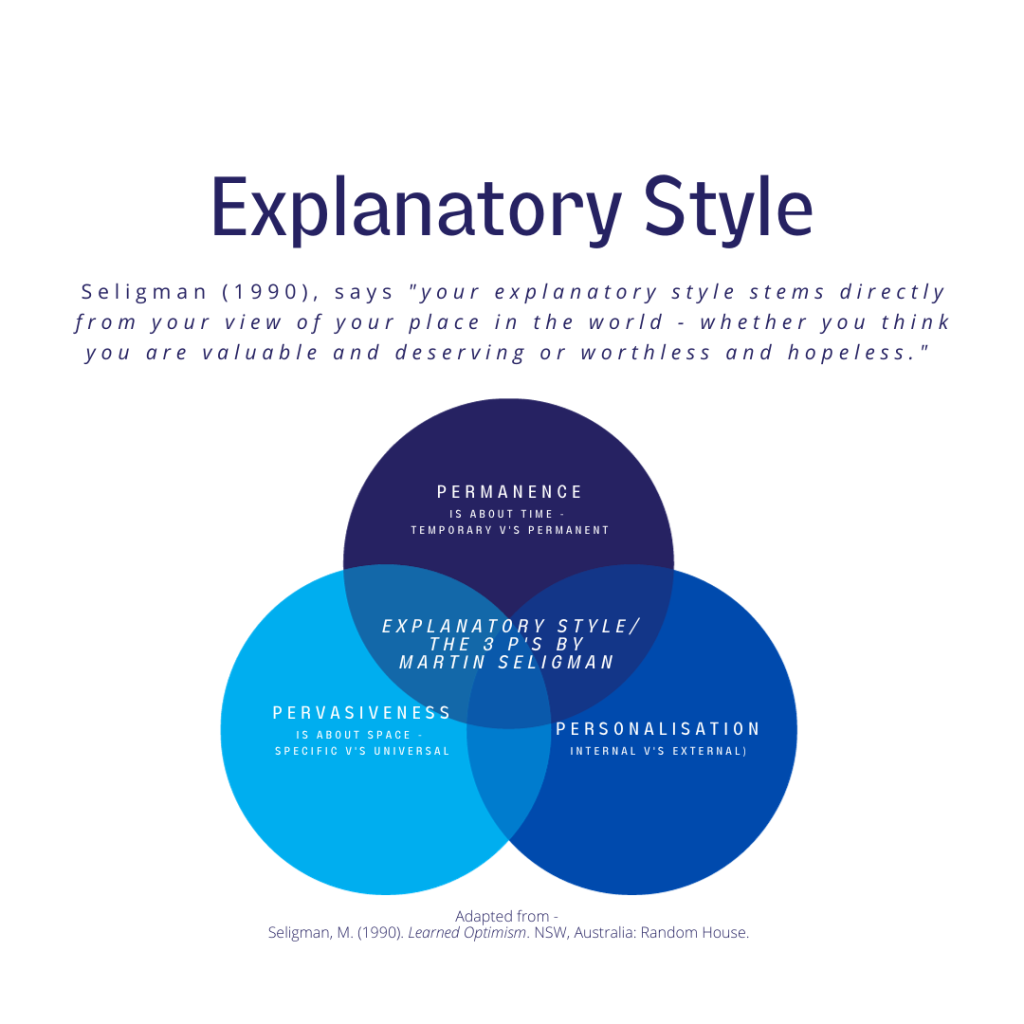The Power Within Knowing Your Explanatory Style

The people I work with have a few things in common: they are smart, highly motivated and want to make a difference in the world. A lot of them are also stressed and are on their way to or are recovering from burnout.
On the outside, they appear calm and confident. But on the inside, they are scared and worried – maybe even have a bit of imposter syndrome. Even though they know they cannot go on living like this, they are unsure of where or how to start to change and whether they have the capacity or ability to deal the possible setbacks when the changes don’t go according to plan.
The Power of Explanatory Style
Explanatory style is your way of explaining about events that happen to you (i.e. often referred to as bad events). It is a habit of thought learned in childhood/adolescence. Seligman (1990), says “your explanatory style stems directly from your view of your place in the world – whether you think you are valuable and deserving or worthless and hopeless.”
There are 3 dimensions to your explanatory style (the 3 P’s) –
- Permanence (is about time): temporary v’s permanent,
- Pervasiveness (is about space): specific v’s universal, and
- Personalisation: internal v’s external.

By identifying your explanatory style, you can see if it is more pessimistic or optimistic. The explanatory style of a pessimist is –
- Permanence (is about time): permanent (i.e. thinking in “always” and “never”),
- Pervasiveness (is about space): universal (i.e. people who catastrophise – have a challenge or failure in one area of their life and allow if to spread to other areas and believe bad event have universal causes), and
- Personalisation: external (i.e. blame other people or external events).
The explanatory style of an optimist is –
- Permanence (is about time): temporary (i.e. thinking in “sometimes” and “latelys”),
- Pervasiveness (is about space): specific (i.e. optimistic believe that bad events have a specific cause and good events will enhance everything), and
- Personalisation: internal (i.e. take responsibility and cause good things).
The Power Within Knowing Your Explanatory Style
Do you think identifying your explanatory style would be useful? If so, following are 3 simple questions to help to start to discover your explanatory style using the 3 P’s –
- Permanence – is this experience temporary or permanent?
- Pervasiveness – does this experience have a specific cause or universal cause?
- Personalisation – is the cause of this experience internal or external?
Once you discover this, you can start to choose to do the work and make any tweaks.
Over to You…
I hope this post has given you some insight in to the power within knowing your explanatory style. By becoming aware of your thinking habits, you can train your brain to be more resilient and deal more effectively with challenges and obstacles. Also – if you wanted to hear Sheryl Sandberg talk about the application of the 3 P’s, click here.
If you are ready to reclaim your courage and take the next step towards freedom and opening your heart, why not join our Toolkit?
Reference –
Seligman, M. (1990). Learned Optimism. NSW, Australia: Random House.
